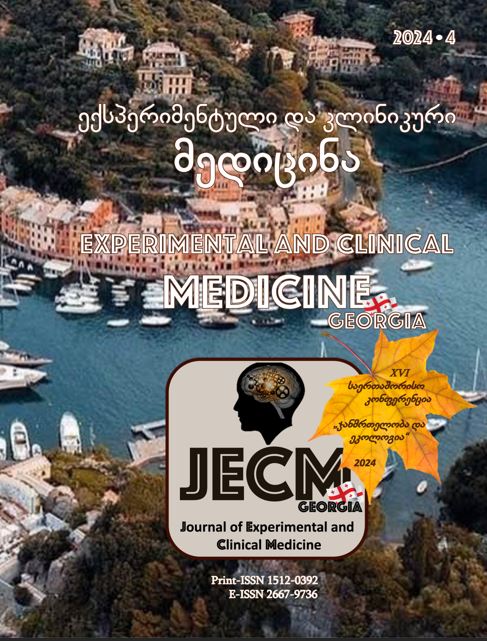AFLATOXINS AND AFLATOXICOSIS, A NEW OR FORGOTTEN OLD CHALLENGE IN THE BACKGROUND OF CLIMATE CHANGE IN THE 20TH-21ST CENTURIES
DOI:
https://doi.org/10.52340/jecm.2024.04.29Keywords:
Climate change, aflatoxins, global health, Hepatitis B and C, hepatocellular carcinomaAbstract
Aflatoxins are naturally occurring mycotoxins that are produced by many species of Aspergillus, a fungus, most notably Aspergillus flavus and Aflatoxins parasiticus. Aflatoxins are toxic and among the most carcinogenic substances known. After entering the body, aflatoxins are metabolized by the liver to a reactive intermediate, aflatoxin M, an epoxide.
The occurrence of aflatoxins is influenced by the climate changes (temperature and humidity-warm and wet is worst); so, the extent of contamination will vary with geographic location, agricultural and agronomic practices, and the susceptibility of peanuts (etc.) to fungus before they are harvested and during storage and/or processing periods. Aflatoxins have received greater attention than any other mycotoxins because they clearly have a potent carcinogenic effect in laboratory rats and their poisonous effects in humans.
Studies have shown that concurrent infection with the hepatitis B virus (HBV) during aflatoxin exposure increases the risk of hepatocellular carcinoma (HCC).
Aflatoxin is associated with both toxicity and carcinogenicity in human and animal populations. Acute aflatoxicosis results in death, where's chronic aflatoxicosis results in more prolonged pathologic changes including cancer and immunosuppression.
Downloads
References
Abbas H.K. Aflatoxin and Food Safety.1st Edition, 2019, CRC Press. 616p. ISBN: 978-0367391928.
Patrick R. Murray. Medical Microbiology, 9th Edition. 2021, Elsevier. 860p. ISBN: 978-0323673228
Anaissie E.J., McGinnis M.R., Pfaller M.A. editors. Clinical mycology, Churchill Livingstone, 2003, 768p. ISBN: 978-0443079375.
Bennett J.W., Klich M. Mycotoxins. Clin Microbiol Rev. 2003 Jul; 16 (3):494-516.
Chandler F.W., Watts J.C. editors. Pathologic diagnosis of fungal infections, Chicago, 1987, ASCP Press. 303p. ISBN: 978-0891892526.
Cohen J., Powderly W.G. editors: Infectious diseases, 2nd Edition, Philadelphia, 2004, Elsevier.
Connor D.H. editors. Pathology of infectious diseases. Stamford, Conn. 1997, Appleton & Lange.
Fromtling R.A., Rhodes J.C., Dixon D.M.: Taxonomy, classification and morphology of the fungi. Murray P.R. et al./ editors: Manual of clinical microbiology.ed. 8. WASHINGTON. 2003. American Society for Microbiology.
Hundler G. 1998. Magical Mushrooms, Mischievous Molds. Princeton, N.J. Princeton University Press.Indoor mold, toxigenic fungi and Stachybotrys chartarum: Infectious disease perspective, Clin Microbiol. Rev. 16:144-172, 2003.
Joe S.F., Wong B. Current status of nonculture methods for diagnosis of invasive infectious. Clin. Microbiol. Rev. 15: 465-484, 2002.
Kuhn D.M., Ghannoum M.A. Indoor mold, toxigenic fungi and Stachybotrys chartarum: Infectious disease perspective, Clin Microbiol. Rev. 16:144-172, 2003.
Mujeeb I. Fungi and fungal infections. In McClatchey K.D., editor: Clinical laboratory medicine, ed. Z. Philadelphia, Lipincott Williams & Wilkins 2002.
Murray P.R. editors. Manual of clinical microbiology, ed. 8, Washington D.C., 2003. American Society for Microbiology.
Pfaller M.A., McGinnis M.R.: The laboratory and clinical mycology In Anaissie EJ. McGinnis M.R., Pfaller M. A: Clinical mycology, New York, 2003, churchill Livingstone.
Reddy S.V., Farid Waliyar (Properties of aflatoxin and its producing fungi) 2002, 1,1.
Richard J.L. Mycotoxins and human disease. In Anaissie E.J., McGinnis M.R., Pfaller M.A., editors: Clinical mycology. New York, 2003, Churchill Livingston.
Smith T. (June 2005). A Focus on Aflatoxin Contamination- United States National Agricultural Library, Food Safety Research Information Office. Retrieved December 17, 2008.
University of Washington, Apiaceous vegetable constituents inhibit human cytochrome- P-450 1Az (hcyp1Az) - mediated mutagenicity of aflatoxin B1, 2006 Sep; 44(9): 1474-84.
Williams J.H., Philips T.D., Jilly et al. Human aflatoxicosis in developing countries: a review of toxicology, exposure, potential health consequences and interventions. Am J. Clin. Nutr. 2005; 80;1106-22 (PMID) 15531656.
Mutocheluh M, Narkwa PW. Aflatoxin B1: an immunomodulator and cancer agent. In: IntechOpen eBooks. ; 2022. doi:10.5772/intechopen.106833
Zhang M, Li Q, Wang J, Sun J, Xiang Y, Jin X. Aflatoxin B1 disrupts the intestinal barrier integrity by reducing junction protein and promoting apoptosis in pigs and mice. Ecotoxicology and Environmental Safety. 2022;247:114250. doi:10.1016/j.ecoenv.2022.114250
Gilbert LA, Horlbeck MA, Adamson B, et al. Genome-Scale CRISPR-Mediated Control of Gene Repression and Activation. Cell. 2014;159(3):647-661. doi:10.1016/j.cell.2014.09.029
Medina A, Rodriguez A, Magan N. Effect of climate change on Aspergillus flavus and aflatoxin B1 production. Front Microbiol. 2014;5:348. Published 2014 Jul 22. doi:10.3389/fmicb.2014.00348
Battilani P, Toscano P, Van der Fels-Klerx H, et al. Aflatoxin B1 contamination in maize in Europe increases due to climate change. Sci Rep. 2016;6:24328. doi:10.1038/srep24328.
Zhang M., Li Q., Wang J. et al. Aflatoxin B1 Disrupts the Intestinal Barrier Integrity by Reducing Junction Protein and Promoting Apoptosis in Pigs and Mice. Ecotoxicol Environ Saf, 2022 Dec 1; 247:114250.
Wild C.P., Miller J.D., Groopman J.D. Mycotoxin control in low- and middle-income countries. Lyon (Fr): International Agency for Research on Cancer; 2015.
Ashraf B, Ghazy D, Shamel M. Effects of aflatoxin B1 on the submandibular salivary gland of albino rats and possible therapeutic potential of Rosmarinus officinalis: a light and electron microscopic study. F1000Res. 2020;9:752. Published 2020 Jul 21. doi:10.12688/f1000research.25196.1
Aspergillosis - Diagnosis & treatment - Mayo Clinic. Published January 6, 2022.
Hell K, Mutegi C, Fandohan P. Aflatoxin control and prevention strategies in maize for Sub-Saharan Africa. ResearchGate. Published online March 4, 2011.
Guan Y, Chen J, Nepovimova E, Long M, Wu W, Kuca K. Aflatoxin detoxification using microorganisms and enzymes. Toxins. 2021;13(1):46. doi:10.3390/toxins13010046
Wang H, Liu M, Zhang Y, et al. Rapid Detection of Aspergillus flavus and Quantitative Determination of Aflatoxin B1 in Grain Crops Using a Portable Raman Spectrometer Combined with Colloidal Au Nanoparticles. Molecules/Molecules Online/Molecules Annual. 2022;27(16):5280. doi:10.3390/molecules27165280.
Kumar A, Pathak H, Bhadauria S, Sudan J. Aflatoxin contamination in food crops: causes, detection, and management: a review. Food Production, Processing and Nutrition. 2021;3(1). doi:10.1186/s43014-021-00064-y.
Wang T, Li P, Zhang Q, et al. Determination of Aspergillus pathogens in agricultural products by a specific nanobody-polyclonal antibody sandwich ELISA. Scientific Reports. 2017;7(1). doi:10.1038/s41598-017-04195-6.






